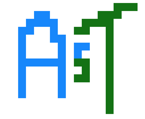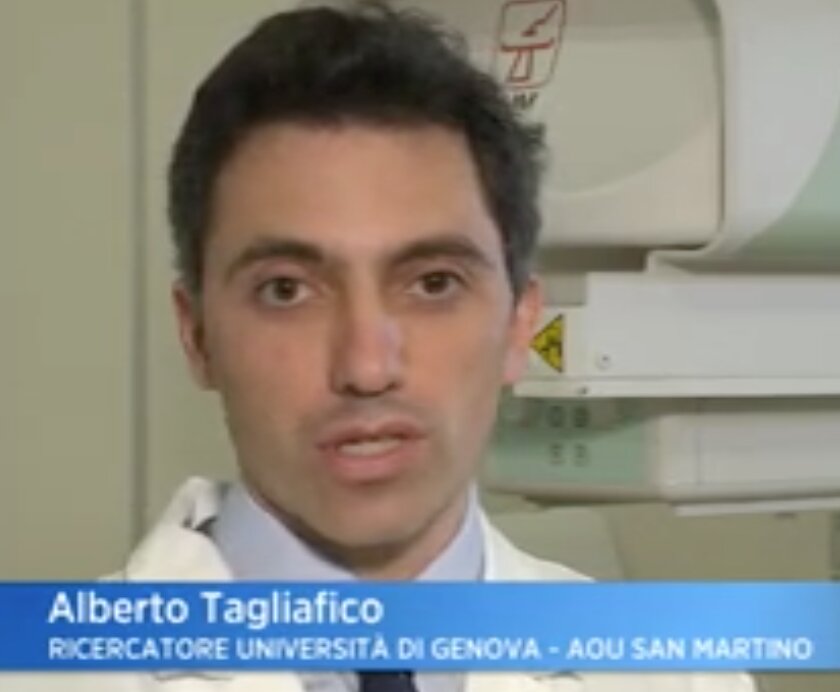
As a researcher, I believe my greatest achievement has been the successful direction as PI of two big studies involving of a cohort of more than 5000 patients for the study ASTOUND (J Clin Oncol 2016 Jun 1;34(16):1882-1888) and 5300 patients for the study ASTOUND-2 (A prospective comparative trial of adjunct screening with tomosynthesis or ultrasound in women with mammography-negative dense breasts (ASTOUND-2), (Eur J Cancer 2018 Nov;104:39-46). Both studies were supported by the same IG Grant by AIRC. In that effort, I performed most of the data analyses, as well as a large part of the clinical activity, coordination and statistics. Thanks to my contribution, our team was able to discover clinically relevant approaches to breast cancer screening. For that studies, but not only for them of course, I was awarded in 2019 with the prestigious Carla Boetes Award by EUSOBI (European Society Of Breast Imaging).
However, during my career, one of my passion is musculoskeletal radiology with interests focused on evidence-based radiology with practical implications on patient care, biomarkers and clinical decision rules, specifically in oncologic imaging applications and technical developments with a special focus on US, CT and MR-imaging. I have published >170 papers, book chapters, and reviews in the field of imaging and received national and international awards (h-index >30 which high for Radiology). In the ESSR (European Society of Musculoskeletal Radiology) I took the scientific lead of the Research Committee for three years (2016-2019) to encourage Research on MSK oncology. Currently, my researches are dedicated to Multiple Myeloma and radiological scores and biomarkers. I developed a score called myeloma spine and bone damage score (MSBDS) using easy descriptive criteria, highly reproducible for harmonizing of total body CT in multiple myeloma patients (doi: 10.1186/s40644-020-00306-1) and my research group was one of the first using radiomics in MM showing that, in clinical practice, radiomics improves the radiological evaluation of focal and diffuse pattern on CT (doi: 10.1016/j.ejrad.2019.108739.). In addition, in Radiomics research Tagliafico and collegues, according to Crivelli et al. (A New Challenge for Radiologists: Radiomics in Breast Cancer, Biomed Res Int) were the first to perform a multicentric and prospective study using a radiomics approach to digital breast tomosynthesis in order to differentiate normal breast tissue from malignant breast tissue in patients with dense breasts (The Breast, vol. 40, pp. 92–96, 2018.)
In biomarkers Research I patented a method to assess sarcopenia on thoracic imaging which has been used in a big study published on Nature (Nature. 2020 Jul;583(7817):620-624. doi: 10.1038/s41586-020-2502-7).
5 major scientific accomplishments:
1) ASTOUND (J Clin Oncol 2016 Jun 1;34(16):1882-1888)
2) ASTOUND-2 (Eur J Cancer 2018 Nov;104:39-46)
3) Patent: 102019000016049 for sarcopenia assessment on pectoralis muscle
4) Carla Boetes Award
5) Research Committee Chair ESSR 2016-2019
As a researcher, I believe my greatest achievement has been the successful direction as PI of two big studies involving of a cohort of more than 5000 patients for the study ASTOUND (J Clin Oncol 2016 Jun 1;34(16):1882-1888) and 5300 patients for the study ASTOUND-2 (A prospective comparative trial of adjunct screening with tomosynthesis or ultrasound in women with mammography-negative dense breasts (ASTOUND-2), (Eur J Cancer 2018 Nov;104:39-46). Both studies were supported by the same IG Grant by AIRC. In that effort, I performed most of the data analyses, as well as a large part of the clinical activity, coordination and statistics. Thanks to my contribution, our team was able to discover clinically relevant approaches to breast cancer screening. For that studies, but not only for them of course, I was awarded in 2019 with the prestigious Carla Boetes Award by EUSOBI (European Society Of Breast Imaging).
However, during my career, one of my passion is musculoskeletal radiology with interests focused on evidence-based radiology with practical implications on patient care, biomarkers and clinical decision rules, specifically in oncologic imaging applications and technical developments with a special focus on US, CT and MR-imaging. I have published >170 papers, book chapters, and reviews in the field of imaging and received national and international awards (h-index >30 which high for Radiology). In the ESSR (European Society of Musculoskeletal Radiology) I took the scientific lead of the Research Committee for three years (2016-2019) to encourage Research on MSK oncology. Currently, my researches are dedicated to Multiple Myeloma and radiological scores and biomarkers. I developed a score called myeloma spine and bone damage score (MSBDS) using easy descriptive criteria, highly reproducible for harmonizing of total body CT in multiple myeloma patients (doi: 10.1186/s40644-020-00306-1) and my research group was one of the first using radiomics in MM showing that, in clinical practice, radiomics improves the radiological evaluation of focal and diffuse pattern on CT (doi: 10.1016/j.ejrad.2019.108739.). In addition, in Radiomics research Tagliafico and collegues, according to Crivelli et al. (A New Challenge for Radiologists: Radiomics in Breast Cancer, Biomed Res Int) were the first to perform a multicentric and prospective study using a radiomics approach to digital breast tomosynthesis in order to differentiate normal breast tissue from malignant breast tissue in patients with dense breasts (The Breast, vol. 40, pp. 92–96, 2018.)
In biomarkers Research I patented a method to assess sarcopenia on thoracic imaging which has been used in a big study published on Nature (Nature. 2020 Jul;583(7817):620-624. doi: 10.1038/s41586-020-2502-7).
5 major scientific accomplishments:
1) ASTOUND (J Clin Oncol 2016 Jun 1;34(16):1882-1888)
2) ASTOUND-2 (Eur J Cancer 2018 Nov;104:39-46)
3) Patent: 102019000016049 for sarcopenia assessment on pectoralis muscle
4) Carla Boetes Award
5) Research Committee Chair ESSR 2016-2019

